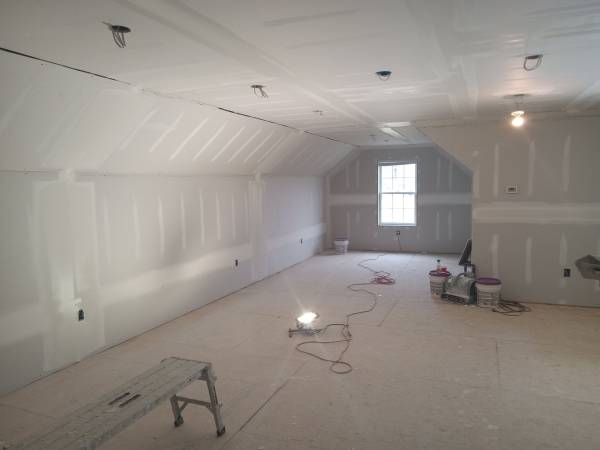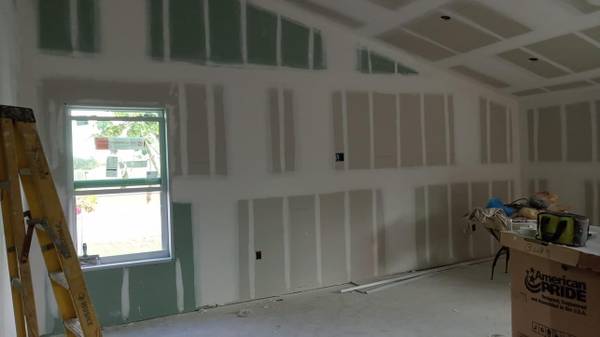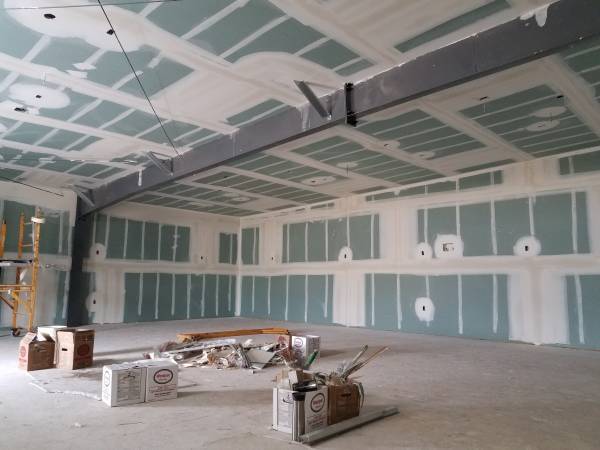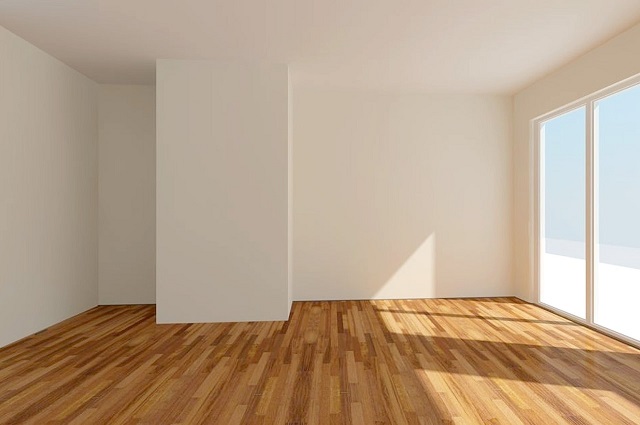Table of Contents
Drywall taping is crucial for a seamless finish
A crucial aspect of achieving a seamless finish in drywall installation is the meticulous process of drywall taping. This often-overlooked step plays a significant role in ensuring the structural integrity and aesthetic appeal of the final product. By properly taping the joints between drywall panels, you create a smooth, uniform surface that hides the gaps between the boards, resulting in a visually pleasing finish that is essential for any professional-looking project.
Without precise drywall taping, even the most expertly installed drywall panels can appear disjointed and unpolished. The tape serves as a reinforcement, preventing cracks and ensuring that the compound adheres securely to the seams. By embedding the tape correctly within the joint compound, you create a seamless transition from one panel to the next, eliminating any visible gaps or imperfections. Ultimately, drywall taping is the foundation upon which a flawless finish is built, making it an indispensable step in the drywall installation process.
Different types of drywall tape
There are several types of drywall tape available for drywall taping, each with its own unique characteristics and applications. Paper tape is a popular choice for its affordability and ease of use. It is commonly used for flat seams and repairs due to its thin and flexible nature. Mesh tape, on the other hand, is self-adhesive and features a mesh design that allows the joint compound to penetrate for a strong bond. This type of tape is ideal for fast and efficient taping jobs, especially for beginners.
Fiberglass tape is a durable option that resists mold and moisture, making it suitable for high-humidity areas like bathrooms and kitchens. It has a slightly rough texture that helps the joint compound adhere securely, resulting in long-lasting seams. Lastly, metal corner tape is designed specifically for reinforcing and protecting outside corners. It provides added strength and impact resistance to corners, reducing the risk of damage over time. Each type of drywall tape has its advantages and is chosen based on the specific needs of the project at hand.
Joint compound for drywall taping
When selecting the right joint compound for your drywall taping project, the first consideration should be whether you need a ready-mixed or a powdered compound. Ready-mixed compounds are convenient for small DIY projects or for those who are new to taping, as they are easy to use straight from the container. On the other hand, powdered compounds can be more cost-effective for larger projects and allow for customization of the consistency to suit your preferences.
Another factor to consider is the setting time of the joint compound. Quick-setting compounds are ideal for professionals or those who require faster drying times, as they can be sanded and recoated in a shorter period. Conversely, regular-setting compounds are more forgiving for beginners or for projects that do not require immediate finishing, as they have a longer working time before they dry. By understanding your project requirements and skill level, you can choose the right joint compound that will help you achieve a smooth and seamless finish.
Preparation steps before starting drywall taping
Inspect the drywall panels for any damages, ensuring that the surface is clean and free from dust, debris, and other contaminants. Take the time to check for any protruding screws or nails that may need to be countersunk or replaced. Additionally, make sure that the drywall panels are properly secured and that there are no gaps between them. This meticulous inspection will lay the foundation for a smooth taping process and a flawless finish.
Next, gather all the necessary tools and materials for the taping job, including drywall tape, joint compound, taping knives, sandpaper, and a mud pan. Organize your workspace to ensure easy access to your tools and a clutter-free environment for efficient work. Having everything you need within reach will streamline the taping process and help you achieve professional results.
Applying the first coat of joint compound
To begin applying the first coat of joint compound, start by mixing the compound until it reaches a smooth consistency. It is crucial to ensure that there are no lumps or air bubbles present in the mixture as this can affect the overall finish. Using a mud pan and a taping knife, load the joint compound onto the knife and apply it evenly along the seams of the drywall. Press the compound firmly into the joints, ensuring that it fills any gaps or recessed areas. Work in small sections at a time to maintain control over the application and to prevent the compound from drying out before it can be smoothed out.
Once the joint compound has been applied along the seams, use the taping knife to smooth out the excess compound, leaving a thin layer over the tape. Be sure to feather out the edges of the compound to blend it seamlessly with the surrounding drywall surface. Avoid leaving any ridges or excess compound as this will require more sanding in the next steps. Allow the first coat to dry completely before proceeding with additional coats, ensuring that each layer is applied with precision and care to achieve a professional-looking finish.
Embed the drywall tape for maximum durability

To achieve maximum durability in your drywall taping project, it is crucial to effectively embed the drywall tape. Properly embedding the tape ensures that the joint compound adheres well to the seams, creating a strong and seamless finish. One key technique to achieve this is to firmly press the tape into the wet joint compound, ensuring that it is fully embedded and there are no air bubbles trapped underneath. This step is essential in preventing future cracking or separation of the seams.
Moreover, when embedding the drywall tape, it is important to feather out the edges with a drywall knife to create a smooth transition between the tape and the surrounding surface. This feathering not only helps to blend the tape seamlessly into the drywall but also minimizes the risk of visible lines or bumps once the finishing coats are applied. By taking the time to embed the tape properly and feather out the edges, you can enhance the overall durability and aesthetic quality of your drywall finish.
Achieving smooth and even seams
To achieve smooth and even seams in your drywall taping project, it is essential to pay close attention to detail and take your time during the application process. Start by ensuring that the joint compound is mixed to a creamy consistency without any lumps or air pockets. Apply a thin and even layer of compound over the joint, making sure to feather out the edges gradually to create a seamless transition between the drywall and tape. Avoid leaving excess compound on the seams, as this can lead to uneven surfaces that will require more sanding later on.
Once the first coat of joint compound has been applied, embed the drywall tape carefully by pressing it into the compound with a drywall knife or trowel. Make sure to remove any excess compound that squeezes out from under the tape to prevent bulges or ridges along the seams. After embedding the tape, apply a second thin coat of compound over the top, extending slightly beyond the edges of the first coat to blend everything smoothly. Remember to keep the layers thin and even to minimize the need for excessive sanding and achieve a flawless finish in the end.
Feathering out the joint compound
Properly feathering out the joint compound is a critical step in achieving a smooth and seamless finish when taping drywall. This process involves gradually thinning out the joint compound towards the edges to create a gradual transition between the compound and the surrounding wall surface. By feathering out the edges, you can avoid visible ridges or bumps where the compound meets the wall, resulting in a professional-looking final product.
Not only does feathering out the joint compound improve the aesthetic appeal of the finished drywall, but it also helps to increase the durability of the taped seams. By tapering the edges of the compound, you create a stronger bond between the tape and the wall, reducing the likelihood of cracks or separation over time. Additionally, properly feathered edges make the sanding process easier and more efficient, ensuring a flawless finish with minimal effort.
Tools and equipment for drywall taping
For efficient drywall taping, investing in the right tools and equipment is essential. One key tool is a high-quality taping knife, available in various sizes to handle different areas and angles effectively. Look for knives with a flexible stainless steel blade for optimal control and smooth application of joint compound. Additionally, a corner trowel is indispensable for creating clean, sharp corners without excess material buildup. Its unique design ensures precise application along edges for seamless results.
Another crucial tool for efficient taping is a mud pan, used for holding and mixing joint compound during the application process. Opt for a stainless steel mud pan with tapered ends for easy scooping and minimal material waste. To ensure consistent mud texture, a mixing paddle attachment for a drill is beneficial for quickly blending compound to the desired smoothness. Moreover, a drywall banjo taper can significantly expedite the taping process by simultaneously applying joint compound and tape along seams, saving time and effort while maintaining high quality.
Common mistakes to avoid during drywall taping
One common mistake to avoid during the drywall taping process is failing to adequately clean and prepare the surface before beginning. Dust, dirt, and any other contaminants left on the drywall can interfere with the adhesion of the joint compound and tape, leading to an uneven finish and potential issues down the line. Taking the time to thoroughly clean the surface and ensure it is dry and free of debris is crucial for achieving a seamless result.
Another mistake to steer clear of is applying too much joint compound in one go. Overloading the seams with excessive compound can create unnecessary bulk, making it challenging to achieve a smooth finish later on. It is essential to apply the joint compound in thin, even layers, allowing each coat to dry completely before adding the next. This approach will help to build up the joint compound gradually and prevent lumps or bumps that can be difficult to sand down efficiently.
Sand and smooth out the joints
To achieve a flawless finish on your drywall project, proper sanding and smoothing out of the joints is crucial. Start by using a sanding block or sandpaper with a fine grit to gently remove any excess joint compound and smooth out imperfections. It’s important to work in circular motions and feather the edges to blend the joints seamlessly with the surrounding drywall.
After the initial sanding process, apply a thin layer of joint compound over the joints to fill in any remaining gaps or uneven areas. Once the compound is dry, lightly sand the surface again with a fine grit sandpaper to create a smooth and even finish. Be sure to use a sanding pole for hard-to-reach areas such as ceilings and high walls to maintain consistency in the texture and appearance of the entire surface.
Applying subsequent coats of joint compound
To ensure a smooth and professional finish when applying subsequent coats of joint compound, it is essential to work methodically and with precision. Begin by inspecting the previous coat for any imperfections such as bubbles, ridges, or uneven areas. Addressing these issues before applying the next coat will result in a more seamless final result. Additionally, make sure to sand any rough edges or high spots to create a smooth surface for the next layer of compound to adhere to.
When applying the subsequent coats of joint compound, aim for consistency in thickness and coverage to avoid uneven build-up and visible seams. Use a wider taping knife than in previous coats to feather out the edges and blend them seamlessly with the surrounding wall. Remember to wipe your knife clean between each pass to prevent excess compound from building up and creating unwanted ridges. By taking your time and following these tips, you can achieve a flawless finish that will enhance the overall appearance of your drywall project.
Flawless finish with minimal sanding
Achieving a flawless finish with minimal sanding is a goal that all drywall tapers aspire to. To minimize the need for excessive sanding, it is essential to apply each coat of joint compound as smoothly and evenly as possible. Make sure to feather out the edges of the compound well to blend them seamlessly with the surrounding areas. By taking the time to apply each coat with precision and care, you can reduce the amount of sanding required, resulting in a more efficient and professional-looking finish.
Furthermore, selecting the right joint compound for the job can also help in achieving a flawless finish with minimal sanding. Opt for a high-quality, lightweight compound that is easy to work with and sands down smoothly. Additionally, consider using setting-type compounds for the initial coats, as they harden quickly and are easier to sand. By choosing the appropriate joint compound and applying it correctly, you can streamline the sanding process and achieve a polished finish with minimal effort.
Blending seams and corners seamlessly
To achieve seamless blending of seams and corners in drywall taping, attention to detail and precision are paramount. One crucial tip is to feather out the joint compound from the center of the seam towards the edges, gradually decreasing pressure to create a smooth transition. By feathering out the joint compound effectively, you can avoid visible lines or ridges, ensuring a professional finish that seamlessly integrates with the surrounding wall surface.
Another expert tip for blending seams and corners seamlessly is to use a wider taping knife for applying joint compound. A wider knife helps to spread the compound evenly over a larger surface area, making it easier to feather out the edges and create a flat, uniform finish. Additionally, maintaining a consistent pressure while smoothing out the joint compound will help to blend the seams and corners seamlessly, preventing any raised or uneven spots that can stand out once the taping is complete.
Finishing techniques for a professional-looking result
To complete the drywall taping process and achieve a professional-looking finish, attention to detail during the final touches and finishing techniques is essential. Once the joint compound has dried completely, carefully inspect the seams and joints for any imperfections or uneven areas that require additional attention. Use a bright light to cast shadows along the walls, aiding in the detection of any remaining bumps or ridges. Address any flaws by lightly sanding the surface with fine-grit sandpaper, ensuring a smooth and seamless transition between the drywall and joint compound.
After sanding, it is crucial to wipe down the walls with a damp sponge to remove any dust particles that may have accumulated. This step is vital for achieving a clean surface that is ready for painting or further treatment. Once the walls are dry, consider applying a primer to prepare the surface for paint, enhancing adhesion and ensuring a uniform finish. By following these meticulous final touches and finishing techniques, you can elevate the overall appearance of your drywall installation to a professional level, showcasing a seamless and flawless result.



